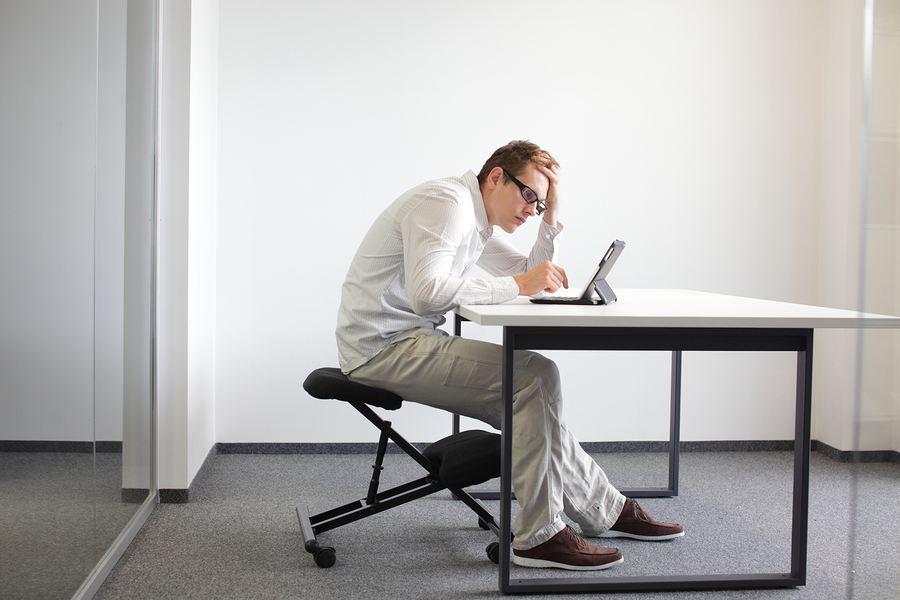 In a recent post, I talked about how “text neck” is becoming an epidemic in our country. More and more people spend hours each day with their head down, staring at their smartphones and tablets. The farther you tilt your head forward, the more strain you create on your neck.
In a recent post, I talked about how “text neck” is becoming an epidemic in our country. More and more people spend hours each day with their head down, staring at their smartphones and tablets. The farther you tilt your head forward, the more strain you create on your neck.
Text neck is just one example of how poor ergonomics and posture can lead to musculoskeletal pain and tension, which most commonly occur around the base of the skull, the temples, the upper shoulders, between the shoulder blades, and the lower back.
This is the result of what we call mechanical distortion in the human body. As Nobel Prize winner Roger Sperry said, the more mechanically distorted a person is, the less energy is available for thinking, metabolism, and healing.
Poor ergonomics and posture only add to muscle stress. They adversely affect our center of gravity. Our muscles are then forced to work overtime, and fatigue and tension set in. When muscles fail or spasm, the body relies more upon ligaments for support, which can cause the ligaments to become weak and unstable.
These issues are further compounded when we sit at a desk all day. After all, sitting can be as unhealthy as smoking. Our muscles and ligaments gradually break down and make it difficult to function. Productivity at work suffers. It becomes harder to keep up and enjoy time with kids. Quality of life diminishes.
Just like most chronic illnesses, we can prevent musculoskeletal pain and injuries by making better decisions about how we move and carry ourselves throughout the day.
Good posture and ergonomics are about more than simply sitting up straight or using an ergonomic chair. Use a headset so you can work and talk on the phone at the same time without tilting your head to the side and wedging a phone between your head and shoulder. Elevate your computer monitor so they’re at eye level. Invest in a convertible desk that allows you to work from a standing position and become more mobile.
If you spend a lot of time sitting at a desk, do microbreak exercises to reset and lengthen the postural muscles. These should be done before you feel tension, pain or spasms. For example:
It boggles my mind that it’s all about mobile, mobile, mobile in the workplace, yet human bodies remain immobile. Isn’t it time to embrace the mobility of modern technology?
Remember, your muscles and joints were designed to move. They thrive on motion. Give them what they want!
It doesn’t matter if you sit behind a desk or perform manual labor all day. Good ergonomics and posture are choices you make each day. By making smart choices, strengthening and lengthening your postural muscles, and staying in motion, you’ll reduce the risk of pain and injuries.